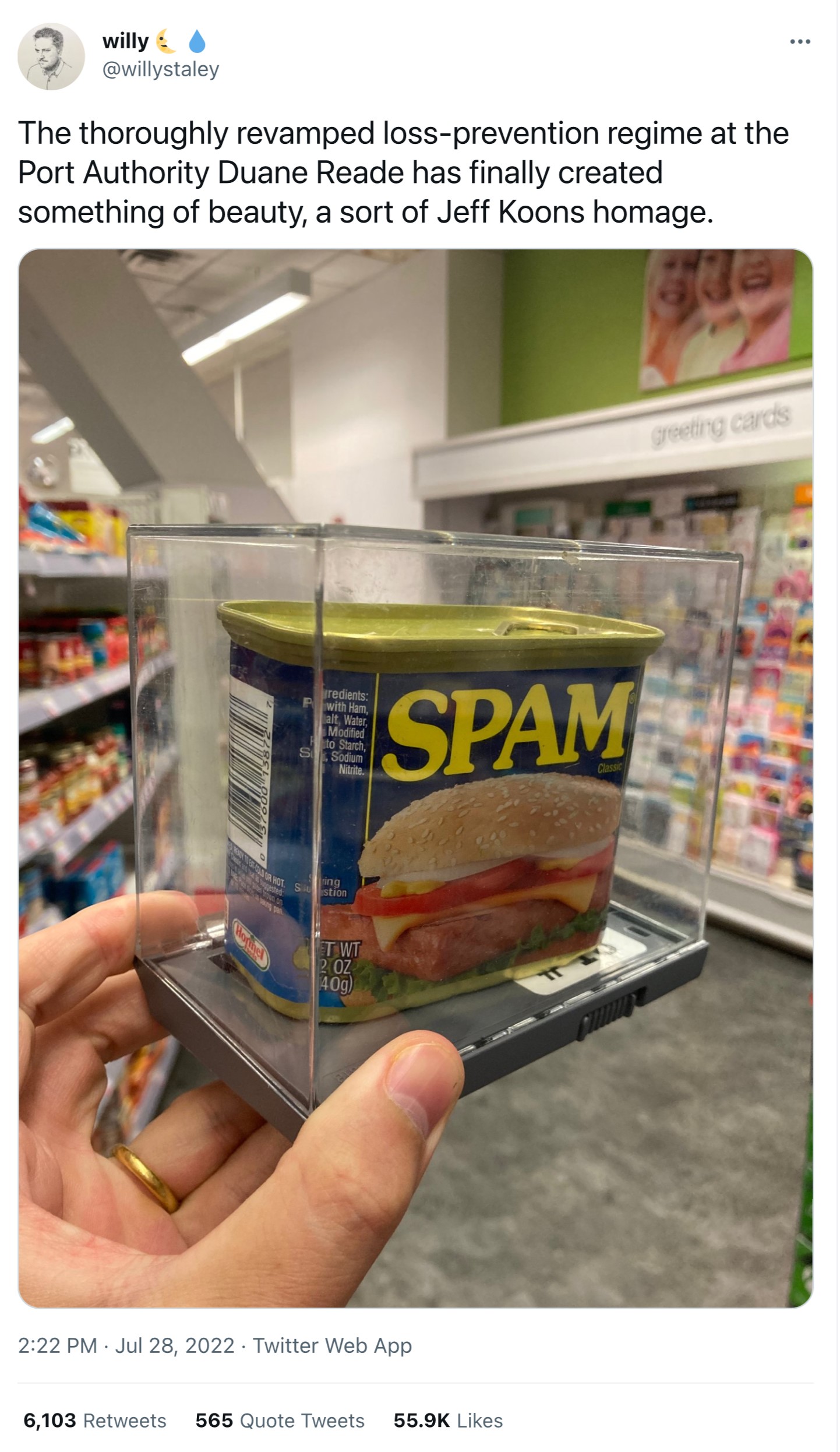HOW IT STARTED: Defunding the Police Is Not Nearly Enough.
—New York magazine, June 12th, 2020.
How it’s going: Why Everything at Walgreens Is Suddenly Behind Plastic.
—Curbed, a spinoff of New York magazine, Wednesday.

Back in 2013, I wrote a lengthy post on Charles Bronson’s first Death Wish movie, filmed on location in the clapped out, crime-ridden Manhattan of the 1970s, and concluded:
In contrast, New York has improved immensely since the period depicted in the original 1974 Death Wish. Naturally, New York’s bourgeois-bohemians, as David Brooks would call them, would welcome a chance to return to the hell of Manhattan in the ‘70s, as Daniel Henninger noted in a 2005 Wall Street Journal article:
The actor John Leguizamo: New York in the ’70s “was funky and gritty and showed the world how a metropolis could be dark and apocalyptic and yet fecund.” Fran Lebowitz, a contributing editor for Vanity Fair: The city “was a wreck; it was going bankrupt. And it was pretty lawless; everything was illegal, but no laws were enforced. It was a city for city-dwellers, not tourists, the way it is now.” Laurie Anderson, a well-known New York artist and performer, admits the ’70s were considered “the dark ages” but “there was great music and everyone was broke.”
* * * * * * *
New York is famous for many things, and the reason the whole world knows this is because New York is a city of artists and writers. Though genius may find its muse anywhere, the Times’ commentators are correctly saying that most artists need to have personal flint chipping at social steel to spark the furnace within. But could it be that New York’s great weakness–beyond the public employee unions, beyond the economic obtuseness–is that its leadership elites are fatally enthralled by a reputation for creative fecundity that has been conjured and kept afloat by the city’s artists and writers? At the center of this New York myth is the belief that everyone here is clever, and so “anything is possible.”
But it isn’t. Everyone here isn’t clever.
Over eight years in the 1970s, New York lost more than a half-million private-sector jobs, according to E.J. McMahon and Fred Siegel of the Manhattan Institute, whose essential travel guide to these years and their aftermath may be found in the current Winter issue of the Public Interest. During the 1970s the real New York nightmare wasn’t lived in the SoHo funkytown, but in the funkless outer boroughs.
Many of the city’s most creative people in the 1970s (as now) were high IQ boys and girls from Smalltown who fled to the Apple and had the smarts to survive and thrive in a city beset with drugs, welfare dependency and housing stock distorted by World War II rent controls. Hell has always seized over-developed imaginations. But what attractions hath hell for average Joes who can’t cop a “life” in SoHo or Williamsburg? Then as now, they just took hell’s hits in the neck, or left. In economic terms, much of creative Manhattan simply “free-rides” on the backs of the workers whose tax payments constrain the bankruptcy sheriff.
As Kyle Smith wrote this month, today he and fellow New Yorkers “grouse about soda bans and Citi Bikes. Twenty years ago, we worried about being mugged or murdered. Electing a Democrat who demonizes the police would ignore the luxury provided by two decades of safety.”
And here we are.
Meanwhile, 95 miles down the Northeast Corridor: Philadelphia Neighborhood Like a ‘Walking Dead’ Episode as Soft-on-Crime Policies and Animal Tranquilizer Craze Take Over the City.
